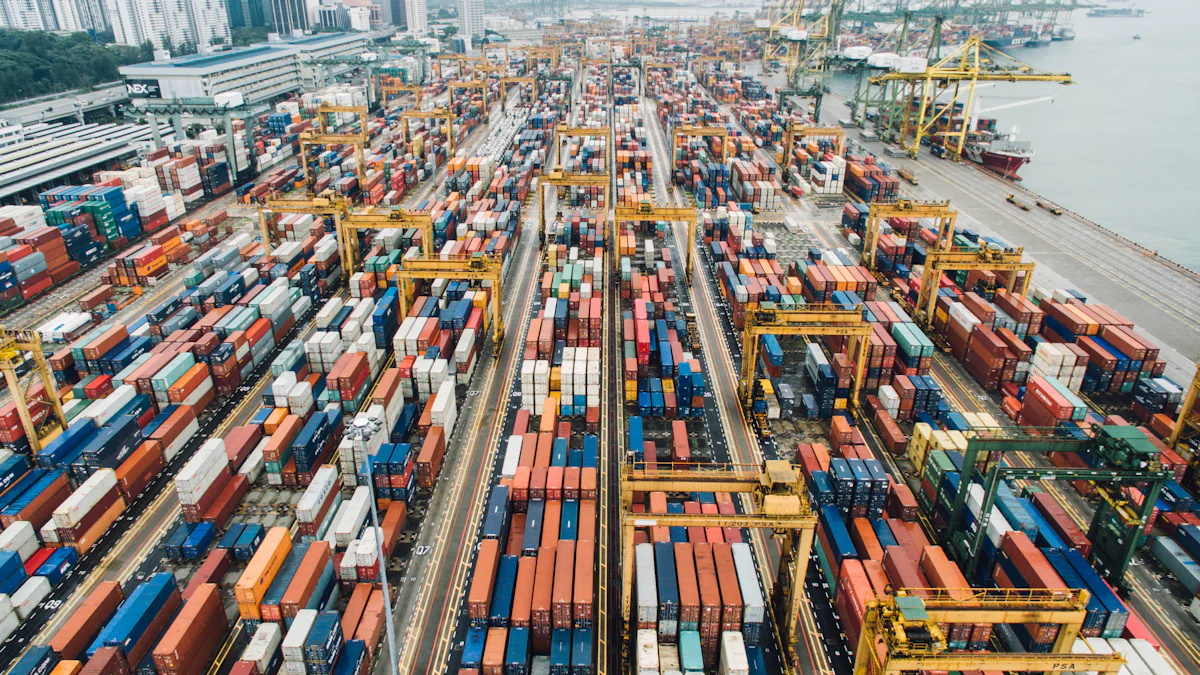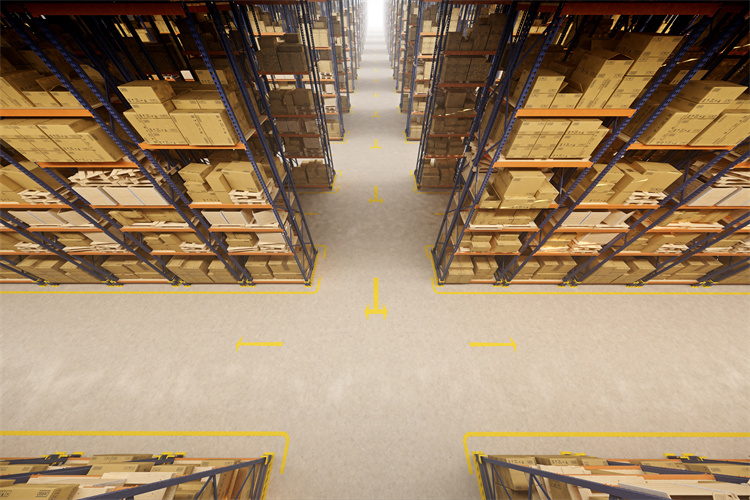From Assembly Line to Global Logistics: Revolutionizing Efficiency and Connectivity

The assembly line changed how industries operate. It standardized products, improving quality and accessibility. Production times dropped, making goods affordable and available worldwide. This innovation introduced economies of scale, fueling industrial growth. You can see its influence in logistics today, where efficiency and cost-effectiveness remain essential for global trade and supply chains.
Key Takeaways
The assembly line made products faster and better to make.
It lowered costs and made goods cheaper for everyone.
New ideas like robots and quick deliveries improve this system today.
Logistics Before the Assembly Process

Pre-Industrial Challenges in Logistics
Before the assembly line, logistics faced significant hurdles. You would have seen goods transported by horse-drawn carts or ships powered by sails. These methods were slow and unreliable. Roads were often in poor condition, making land transport difficult. Weather conditions frequently disrupted shipping routes. Moving goods over long distances required months, not days.
Storage posed another challenge. Warehouses lacked proper organization. You couldn’t track inventory efficiently, leading to frequent shortages or overstocking. Communication between suppliers and buyers was slow. Letters and messengers were the primary means of coordination. This delay often caused confusion and missed deadlines.
The lack of standardized processes made logistics unpredictable. Each region had its own methods for handling goods. This inconsistency created inefficiencies and increased costs. You can imagine how frustrating it was to manage such a disjointed system.
Early Manufacturing and Supply Chain Inefficiencies
Manufacturing before the assembly line was labor-intensive. Workers crafted products by hand, one at a time. This process limited productivity. You couldn’t produce large quantities of goods quickly. Skilled labor was essential, but it was expensive and scarce.
Supply chains were equally inefficient. Raw materials often arrived late due to poor transportation systems. Factories struggled to maintain steady production. You would have seen frequent delays in delivering finished goods to markets. These inefficiencies drove up costs and made products unaffordable for many people.
Without modern logistics systems, manufacturers couldn’t scale their operations. The lack of coordination between suppliers, producers, and distributors created bottlenecks. You can see how these challenges hindered economic growth and innovation.
How the Assembly Process Transformed Logistics

Efficiency Gains in Production and Distribution
The assembly process revolutionized production and distribution by introducing unprecedented efficiency. Manufacturers could now produce goods faster and with greater accuracy. The division of labor allowed workers to specialize in specific tasks, speeding up assembly operations. This specialization improved productivity and ensured a consistent assembly flow, meeting market demands more effectively.
You can see the impact of this transformation in industries like automotive and electronics. For example:
The price of the Model T dropped from $825 in 1908 to $575 in 1912 due to enhanced productivity.
During World War II, American aircraft manufacturers increased production from fewer than 3,000 planes in 1939 to over 300,000 planes.
The assembly process also transformed food processing and pharmaceutical manufacturing, improving packaging and distribution efficiency.
These advancements made products more accessible to the public while streamlining logistics networks.
Cost Reductions and Economies of Scale
The assembly process significantly reduced production costs, enabling economies of scale. By standardizing operations and using interchangeable parts, manufacturers lowered expenses. The moving assembly line, introduced in 1913, allowed for mass production at a fraction of the previous cost.
For instance, the Model T became affordable for the middle class, with its price equivalent to a modern reduction from $15,000 to $10,000. In 1914, an assembly line worker could purchase a Model T with just four months' salary. This affordability expanded markets and fueled industrial growth. Lower costs also benefited logistics, as streamlined production reduced delays and improved supply chain efficiency.
Supply Chain Innovations and the Role of JUSDA
The assembly process introduced key supply chain innovations that reshaped logistics. Interchangeable parts and standardized assembly operations simplified manufacturing and distribution. These innovations laid the groundwork for modern logistics systems, enabling faster and more reliable delivery of goods.
Today, companies like JUSDA build on these principles through digital transformation. JUSDA’s China-Europe Express Rail exemplifies this evolution. It offers a balanced solution between speed and cost, delivering goods in 15-20 days. This service optimizes logistics by integrating rail and sea transport, ensuring smooth assembly flow across continents. JUSDA’s innovations demonstrate how the legacy of the assembly process continues to drive global supply chain advancements.
The Assembly Line’s Legacy in Modern Logistics
Automation and Robotics in Logistics
The assembly process inspired the integration of automation and robotics into logistics. You can see how companies now use robots to optimize workflows and maintain 24/7 operations. Automated Guided Vehicles (AGVs) and Autonomous Mobile Robots (AMRs) streamline the movement of goods in warehouses. Robotic arms assist in tasks like sorting and packing, enhancing operational efficiency. Businesses that expanded their robotics footprint reported significant gains in productivity and cost savings. For example, automation can improve productivity by up to 48% and reduce operating costs by 42%. It also frees up 30%-50% of skilled workers’ time for more value-added tasks.
Amazon pioneered automation in distribution centers, setting a trend that transformed the logistics industry. Robotics ensures a seamless flow of goods, reducing delays and errors. This evolution reflects the assembly process's legacy, where efficiency and standardization remain central to logistics innovation.
Just-in-Time Delivery and Lean Manufacturing
Just-in-time delivery builds on the principles of the assembly process by minimizing inventory levels and ensuring materials arrive only when needed. This approach reduces waste and optimizes space management. You can see how technology supports this system through real-time feedback, monitoring supply levels and assembly operations. Lean manufacturing, an evolution of assembly principles, emphasizes waste elimination and continuous improvement. Practices like Kaizen involve all team members in identifying inefficiencies.
These methodologies enhance productivity and responsiveness to demand. For example, lean manufacturing incorporates advanced technologies and data analysis to maximize output with fewer resources. This focus on efficiency ensures a smooth production flow, directly benefiting logistics systems.
Global Supply Chains and the China-Europe Express Rail
The assembly process laid the foundation for global supply chains, enabling the efficient movement of goods across continents. JUSDA’s China-Europe Express Rail exemplifies this legacy. This service connects over 130 cities in more than 25 countries, completing over 8,416 trips and transporting 7.5 million tons of goods. It offers a faster alternative to sea freight and a cost-effective option compared to air freight.
The rail service enhances logistics by reducing handling and storage costs. It ensures timely delivery of high-demand goods, maintaining competitiveness in global markets. By integrating rail and sea transport, it optimizes resource allocation and accelerates the flow of goods. This innovation demonstrates how the assembly process continues to influence modern logistics through digital transformation and global connectivity.

JUSDA Solutions
To provide you with professional solutions and quotations.
The assembly line transformed logistics by solving inefficiencies and boosting productivity. It introduced assembly operations that streamlined manufacturing and improved inventory management. Its influence persists in modern practices like automation and global supply chains. JUSDA builds on this legacy with innovative solutions like the China-Europe Express Rail, optimizing logistics worldwide.
See Also
Transforming Future Logistics Through AI Supply Chain Innovations
The Influence of Supply Chain Innovations on Logistics Evolution
Innovative Logistics Technologies Shaping Our Future Journey
Unveiling Robotics Innovations Driving Supply Chain Transformation
Boosting Warehouse Efficiency with Advanced Logistics Robotics
